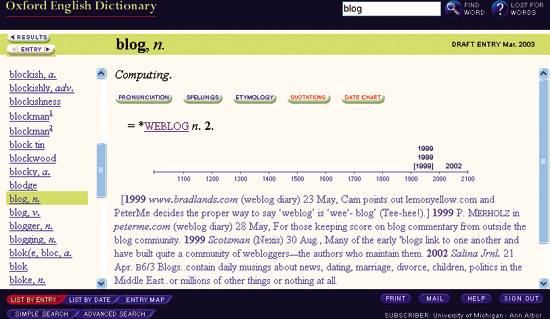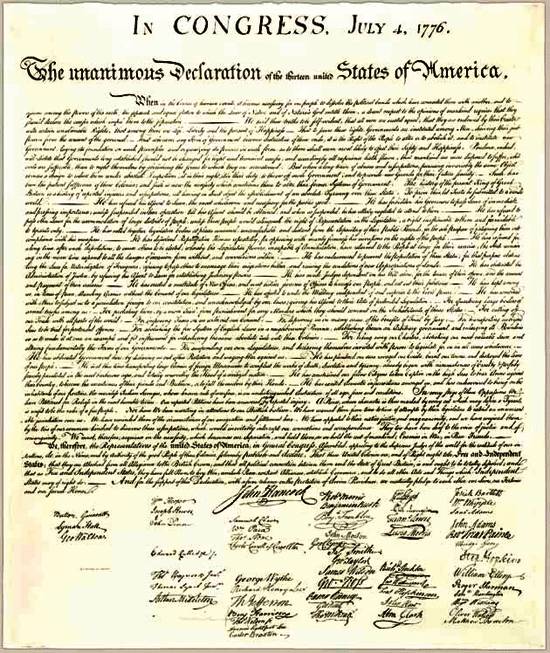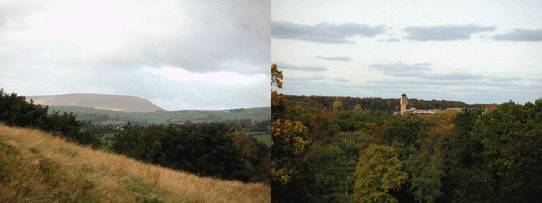7.7. Sources of Inspiration Given enough eyeballs, all bugs are shallowthis is the conclusion of Eric S. Raymond's anatomy of open source, The Cathedral and the Bazaar, which begins with the words: Linux is subversive. Who would have thought...that a world-class operating system could coalesce as if by magic out of part-time hacking by several thousand developers scattered all over the planet, connected only by the tenuous strands of the Internet?[*] [*] "The Cathedral and the Bazaar" by Eric S. Raymond (1998). First Monday, vol. 3. no. 3. Available at http://www.firstmonday.org/issues/issue3_3/index.html.
Eric explores the evolutionary advantage of self-correcting systems populated by selfish agents over the centralized, top-down approach of traditional software development. At face value, this is a technical essay, but beneath the surface, lies a manifesto. Many people (especially those who politically distrust free markets) would expect a culture of self-directed egoists to be fragmented, territorial, wasteful, secretive, and hostile. But this expectation is clearly falsified by (to give just one example) the stunning variety, quality and depth of Linux documentation.[ ] ] ] Raymond (1998).
Eric advances open source culture"release early and often, delegate everything you can, be open to the point of promiscuity"over the closed models of commerce, positioning Linus Torvald's developing success as evidence that cathedrals must give way to bazaars. We hear this same rebel yell in the ancient markets of the cluetrain manifesto, the mobile thumb tribes of smart mobs, and the disruptive technologies of peer-to-peer. We embrace the hidden power of social networks and the emergent wisdom of crowds. We are small pieces loosely joined in persistent disequilibrium, gloriously and gladly out of control. In celebration of the network era, each of these colorful texts makes an impact and then fades into the rich tapestry of our history and culture. With revolutionary fervor, these authors cheer the end of hierarchy, even as their words accrue the ponderous weight of authority, for they forget that today's curators are yesterday's rebels. The new world of open source and emerging technology has more in common with the old world of libraries and print than we may think. As Lawrence Lessig reminds us, the Oxford English Dictionary was "mankind's first large-scale collaborative open source text project,"[ ] and its nascent inclusion of Internet vocabulary, shown in Figure 7-8, suggests its not dead yet. ] and its nascent inclusion of Internet vocabulary, shown in Figure 7-8, suggests its not dead yet. [ ] Lessig, p. 19. ] Lessig, p. 19.
Figure 7-8. Blog in OED Online (Date Chart) 
And the free public library was once only a twinkle in the eye of a rebel named Benjamin Franklin. Fifty years before co-authoring and signing the Declaration of Independence, shown in Figure 7-9, young Benjamin created "social libraries" to promote the free sharing of books and the pursuit of knowledge through study and vigorous debate.[*] [*] History of Libraries in the Western World by Michael H. Harris. Scarecrow Press (1995), p. 183184.
Libraries and the Internet have analagous histories, but more important, they represent shared values. Privacy, intellectual freedom, free expression, free and equal access to ideas and information, resistance to censorshipthese principles, these unalienable rights and self-evident truths, are held in common by librarians and hackers, from the most revered universities to the most irreverent activists of social software and open source. Figure 7-9. The Declaration of Independence (archives.gov) 
This is important, because as Kevin Kelly explains, the people of the book and the people of the screen will soon be on the same page, literally if not figuratively.[ ] Not only will we surf the Web on our televisions and watch television on our Treos, but soon digital ink will render it all together on the soft, flexible pages of portable, sharable books. ] Not only will we surf the Web on our televisions and watch television on our Treos, but soon digital ink will render it all together on the soft, flexible pages of portable, sharable books. ] "Will We Still Turn Pages?" by Kevin Kelly. This is important, because as we shape this bizarre commons of code and content, we can learn much from the cathedrals of knowledge we call libraries. Brewster Kahle, founder of the Internet Archive, understood this earlier than most. In the 1980s, Brewster studied artificial intelligence with Marvin Minsky and helped grow the supercomputer firm, Thinking Machines. Then, in 1992, with the open source releases of WAIS, Brewster included an article on the "Ethics of Digital Librarianship," in which he wrote: As digital librarian, you should serve and protect each patron as if she were your only employer. As more of us become involved in serving information electronically...[we] must become conscious of our ethical responsibilities...being a good digital librarian is a concrete way to create a future we all want to live in.[*] [*] "Ethics of Digital Librarianship" by Brewster Kahle. Available at http://www.archive.org/about/ethics_BK.php.
His belief that values must accompany value is evident in the mission of the Internet Archive, to build a digital library that provides universal access to human knowledge: Libraries exist to preserve society's cultural artifacts and to provide access to them...without cultural artifacts, civilization has no memory and no mechanism to learn from its successes and failures...[we are] working to prevent the Internet...and other born-digital materials from disappearing into the past.[*] [*] "About the Internet Archive" at http://www4.archive.org/about/about.php.
Brewster Kahle's trip began at the center of AI, but his decisions led inevitably to the soft edges of human knowledge. Herbert Simon's search for intelligent machines resulted in the death of decision trees and the birth of bounded rationality. And Jeff Hawkins's quest spawned novel insights into memory, prediction, and the nature of real intelligence. As the footsteps of these wanderers suggest, the journey transforms the destination. My travels have included many such roundabouts, strange loops, and tangled hierarchies. For example, my fascination with artificial intelligence, back in the summer of 1989, sparked an interest in computers, which led me to computer networks, information science, librarianship, the Internet, and information architecture. My search for AI in the hills of England evolved into a quest for IA among the trees of Ann Arbor, shown in Figure 7-10.[ ] ] ] With more than 33,000 trees along its streets, Ann Arbor is known as Tree City, USA.
Figure 7-10. From the hills of England to the trees of Ann Arbor 
And my career in information architecture has kindled my passion for findability, which coincidentally led me to write (and you to read) this book. Our paths have crossed at the strange conjunction of ambient findability, and our destinations may never be the same.
|


 ]
] ] and its nascent inclusion of Internet vocabulary, shown in Figure 7-8, suggests its not dead yet.
] and its nascent inclusion of Internet vocabulary, shown in Figure 7-8, suggests its not dead yet. ] Lessig, p. 19.
] Lessig, p. 19.